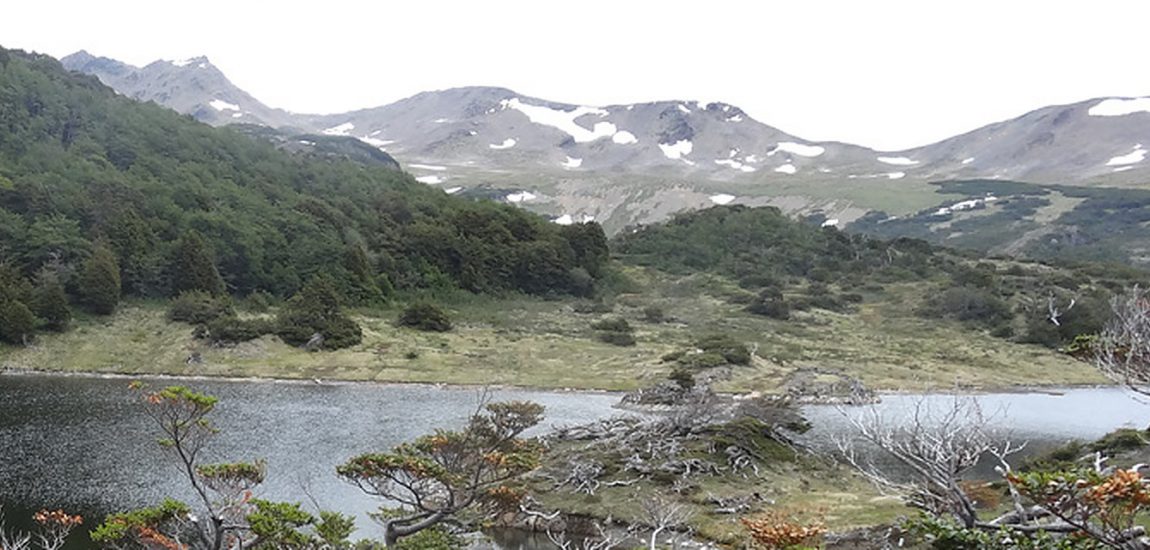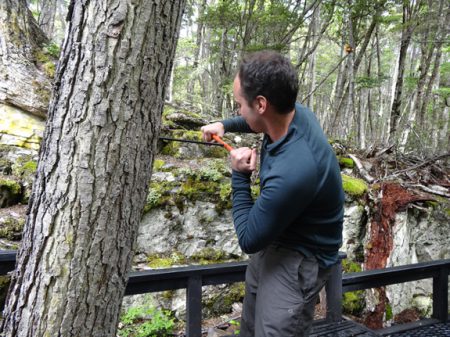
Beech Hunting in the Land of Fire
The best thing about working in Earth Sciences is the fieldwork, hands down. From looking at old mines in the Lake District to collecting fossil microorganisms in Trinidad, it’s exciting to get outside and actually see the system you’re studying (my answer might be different if you ask me when I’m stood on a muddy river bank in the Lake District in horizontal rain in November). So I consider myself extremely fortunate to have recently been able to go to Isla Navarino in Tierra del Fuego, Chile earlier this year to collect some plant and soil samples for my research.
Accessible only by a tiny twin-propeller plane or the occasional beautiful but freezing 36-hour boat journey through the Beagle Channel, Puerto Williams on Isla Navarino is the southernmost settlement in the world. As well as this, the island is home to some of the most pristine forests in the world and more than 5% of the world’s bryophyte species on less than 0.01% of the world’s landmass, so ecologically speaking it is a fascinating, remote and special place.
My research uses oxygen, hydrogen and carbon isotopes of plant compounds from 3-14 million year old fossil southern beech trees from Antarctica to look at how global climate might have been different in the past. In particular I am interested in how aspects of the global hydrological cycle – such as rainfall patterns or atmospheric circulation – may have differed during a time when the Earth was a few degrees warmer than it is now. In order to better understand my data from the fossil trees, it is also necessary to study how their close living relatives, which may be found in New Zealand and southernmost South America, interact with their environment. The fossil trees I study grew in a krummholz form (literally, ‘crooked wood’) and today, this stunted form of tree growth is mostly found at the tree-line in subantarctic environments. We had heard that there were southern beeches growing in dwarf krummholz form up in the mountains; however, to ensure that we had been thorough, we sampled over an altitude gradient reaching from sea level to the tree line.

To this end, my trusty field assistant Joe and I spent three weeks squelching through knee-deep peat bogs and climbing up waterfalls to collect tree-cores from two species of southern beech, known locally as lenga and ñirre. It was fascinating to see the morphology of the trees change with altitude from erect, arboreal forms, to full sized but prostrate forms at higher altitudes, and up again to find the dwarf prostrate forms we had been searching for.The most exciting part of the fieldwork was reaching the higher altitudes where, on the banks of several freezing lakes (still not too cold to swim in), a wide range of plants cling on to life in a fairly inhospitable area of the world. Even at the height of summer, the snow line extends down to ~500 m above sea level – although this is not enough to stop an invasive beaver population from decimating parts of the forest. Fortunately (or not, as it turned out), this meant that there was beaver stew aplenty to eat in Puerto Williams once we had returned.
This fieldwork would not have been possible without the financial support of the Trans-Antarctic Association. Many thanks also go to the Omora Ethnobotanical Park in Puerto Williams for allowing me to use the field station as a base, and to Marcelo Leppe at the Insitutio Antàrctico Chileno in Punta Arenas for his invaluable advice and help with navigating the somewhat suspicious border agency.
About the author
Rhian Rees-Owen is a PhD student in the Cohen Geochemistry and Palaeo@Leeds research groups in the School of Earth and Environment at the University of Leeds. She is primarily interested in palaeoclimatology and how biomarkers and stable isotopes can be used to explore the Earth’s climatic past. Her current work focuses on reconstructing the global palaeohydrological cycle between 3 and 14 million years ago using fossil trees from Antarctica. She can normally be found hunched over a microbalance weighing out tiny quantities of cellulose.

